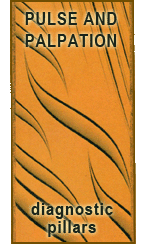Simple Pulse Qualities: Length

Length: short-long
Alism: If the strength of the pulse is the best tie breaking quality to differentiate between excess and deficiency, the length of the pulse is the least likely to help you understand anything. I actually do take the short pulse seriously, but the long pulse is kind of useless in my opinion.
The short pulse is defined as the pulse that you can feel in the middle position, but it doesn’t necessarily pulse beneath the distal or proximal positions. It doesn’t actually need to be centered only on the middle position, but the point here is that the pulse is not felt under all three positions. That’s the key issue here.
As has been described many times thus far, the forceful pulse that is also short suggests an excessive obstruction to the flow of qi and blood. Alism: Often this derives from a Liver/Spleen disharmony pulse where you’ll find that middle (guan) position to be wider and stronger than the other positions on both the left and right sides. This is an exceedingly common pulse but it shouldn’t be assumed to be “short”, although it is going in that direction.
The short pulse that is also forceless suggests a deficiency of qi and/or blood which is unable to fill all three positions on the wrist.
A long pulse extends beyond the distal and proximal positions. I don’t think this finding is especially helpful. Generally it indicates excessive heat such as you’ll find in a high fever. However, the signs and symptoms of excessive heat are fairly unambiguous and so we don’t really need to rely on the pulse to make that determination.
Furthermore, there are plenty of tall people who require that you re-calibrate your sense of where the proximal position really is in relation to the middle or guan position. In other words, tall people appear to have long pulses not because of excessive qi and blood overfilling the vessels, but because of the length of their arm.

Normal Pulse Length
Next: pulse shape.
 Last modified: August 17, 2009
Last modified: August 17, 2009  Tags: Diagnosis, Palpation В· Posted in: Pulse Class, Pulse-Palpation
Tags: Diagnosis, Palpation В· Posted in: Pulse Class, Pulse-Palpation
